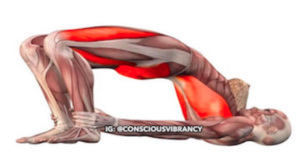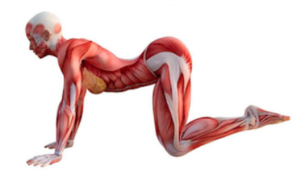By Sharon A. Chirban, PhD In HBR this week, an article was published on the…

Pilates – An Explanation and 3 Pilates Poses/Exercises
“A body free from nervous tension and fatigue is the ideal shelter provided by nature for housing a well balanced mind, fully capable of successfully meeting all the complex problems of modern living.” ~Joseph Pilates
Pilates was developed to unify the mind, body and spirit and create exercises that involve the whole person. Pilates pays close attention to the breath, proper form and efficient patterns of movement. In some ways, Pilates is similar to mindfulness or meditation, as it has you focus your attention on one thing: your body. This allows you to gain all the benefits of mindfulness without sitting still!
In addition to strengthening the core, Pilates improves balance, increases coordination and decreases stress. Studies find that Pilates helps to rebalance stress hormones that settle into the body, which can cause anxiety, hypertension, muscle spasms and pain. Through Pilates, muscles are gently stretched and conditioned, improving deep muscle activation and better mind- body connection. The biggest benefit of Pilates is most often reported to be, learning to control the breath. Recently, a study showed that various emotional states had distinctive breathing patterns. Several breathing exercises taught in Pilates have been found to calm the mind and regulate emotions in the face of stressful life situations.
Pilates practice also teaches to respect and accept our bodies. Pilates is designed to work within an individual’s range of motion, focusing on building strength and flexibility, according to the individual’s needs. With emphasis in good posture and proper body alignment, Pilates additionally encourages self-confidence.
“Through the Pilates Method of Body Conditioning this unique trinity of a balanced body, mind and spirit can ever be attained. Self confidence follows.”
~Joseph Pilates
POSES FOR YOU TO TRY
Swan Pilates pose:

How to do the Swan Pose:
“Inhale- Engage the abdominals, slide the shoulders blades down the back and lift the upper body into extension as you press the hands into the mat. Keep the shoulders away from the ears and rise up only as far as the low back is comfortable. Keep the head in line with your spine.
Exhale- Lower the torso back down to the mat with control.”
Benefits of Swan Pose:
This pose stretches muscles in the shoulders, chest and abdominals, as well as decreasing stiffness in the lower back. Overall flexibility is improved while also relieving stress and fatigue, improving circulation, digestion and elevating mood.
Bridge Pose:

How to do the Bridge Pose:
“Lie spine up with the knees bent and the feet flat on the mat with arms at the sides of the body or attached to the feet.
Inhale- Engage the abdominals and press the tailbone up toward the ceiling to lift the back off the floor keeping the supine relatively neutral.
Exhale- Lower the hips back down to the floor”
Benefits of Bridge Pose:
The bridge pose stretches chest, neck, spine and hips, while also strengthening the back and buttocks. This exercise helps to alleviate stress and mild depression. Additionally, the brain and central nervous system are calmed which help to reduce fatigue, anxiety and insomnia.
Cat-Cow Pose:

How to do Cat-Cow:
“From on all fours, exhale, engage the abdominals and round the back, tucking the tailbone and chin. Inhale, arch the spine, sending the tailbone and head towards the ceiling.”
Benefits of Cat-Cow:
This gentle flow between Cat and Cow position stretches back, torso and neck and strengthens the abdominal region. Coordinating this movement with the breath calms the mind and relieves stress and fatigue.


